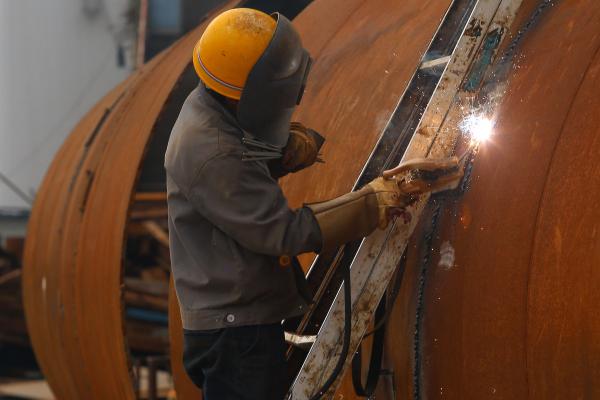
March 5 (UPI) — Tariffs on steel and aluminum announced by U.S. President Donald Trump brought concerns from the very energy sector he’s trying to support.
Jack Gerard, the president and CEO of the American Petroleum Institute, said the president’s announcement of a 25 percent tariff on steel imports and a 10 percent tariff for aluminum was inconsistent with Trump’s goal of U.S. energy dominance.
“The U.S. oil and natural gas industry, in particular, relies on specialty steel for many of its projects that most U.S. steelmakers don’t supply,” Gerard said in a statement. “Consideration must be given to continue the unprecedented and historic energy renaissance that our industry has driven through important investments that have driven job creation and economic growth.”
The United States, at around 10 million barrels per day, is on pace to become the world’s largest oil producer. Its shale natural gas is also finding its way to the global market in the form of liquefied natural gas.
Pipelines, meanwhile, could see costs rise. In one of his first moves in office, President Trump streamlined the permit process from the Keystone XL and Dakota Access pipelines through the country.
The U.S. Association of Oil Pipelines said the administration should use caution when considering new tariffs. Hundreds of millions of dollars could be added to the cost of major pipeline projects like Keystone XL and take jobs out of the U.S. economy.
“We are urging the administration to avoid killing U.S. jobs through a steel tariff that impacts pipelines,” the trade group’s president, Andy Black, said in a statement.
The AOPL said pipeline-grade steel is a niche industry that U.S. manufacturers have left because of the higher costs and lower margins, compared to other sectors like automotive. Domestic steel capacity isn’t strong enough to support pipeline demand in the U.S. energy sector.
“I want to keep prices down, but I also want to make sure that we have a steel industry and an aluminum industry, and we do need that for national defense,” Trump said.
According to analysis emailed from commodity pricing group S&P Global Platts, steel users and manufacturers oppose the tariffs. Oil and gas companies, meanwhile, could be forced to cancel projects because of the higher price for steel.
Ole Hanson, the head of commodity strategy at Saxo Bank, told UPI the tariffs won’t be good for the U.S. oil industry in particular because of the potential cost escalation and the need for more pipeline capacity.
“The price of oil could potentially benefit from U.S. producers facing higher costs and thereby less appetite for increasing production,” he said. “In the short term, however, the price risk is skewed to the downside given the potential impact on risk appetite as seen through lower stocks.”
U.S. Commerce Secretary Wilbur Ross recommended the tariffs last month, saying in a report that steel and aluminum import volumes represented a threat to national security. In response to the report, the U.S. Steel Manufacturers Association said tariffs would “allow U.S. producers to reinvest to maintain and strengthen the industry to ensure U.S. steel production can survive to serve U.S. national defense interests.”
Equities markets were in the red after the tariff announcement and spilling over to commodities.






